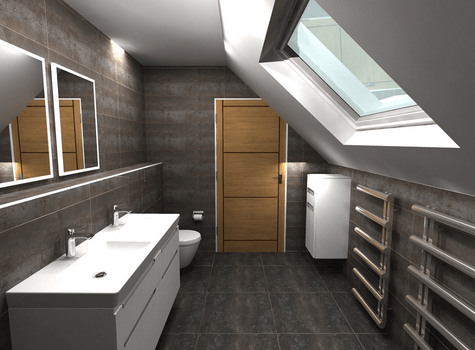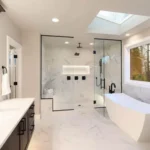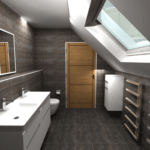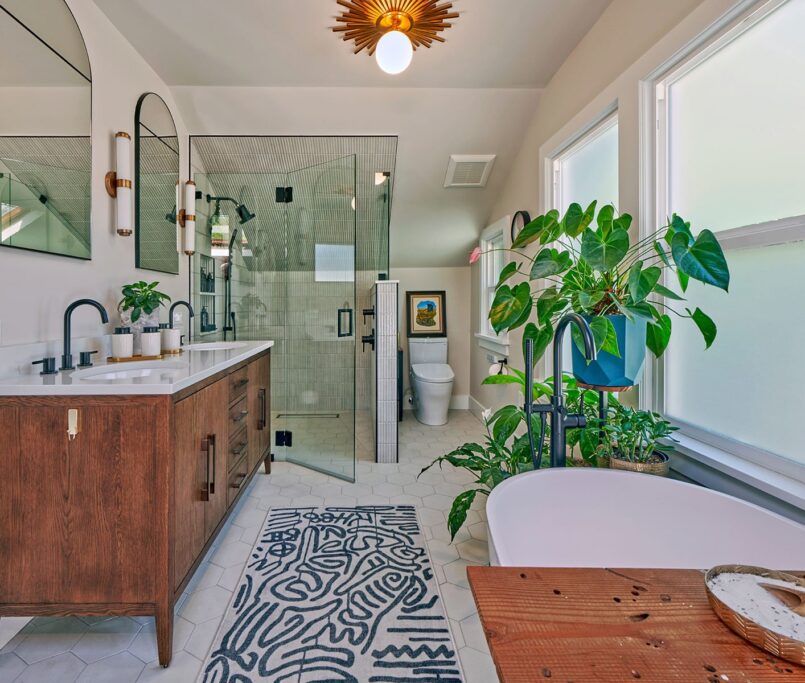Expert Budget Planning Tips Bathroom For Remodeling
Every great remodel starts with inspiration and every successful one starts with a budget. Budget Planning Tips Bathroom Remodeling should be the first thing homeowners consider before picking out tile or browsing vanities. A bathroom might be small in size, but its expenses can climb quickly due to plumbing, electrical work, and material selections packed into a tight space. Many homeowners begin with a rough estimate, only to discover that hidden costs, mid-project changes, and overlooked upgrades add thousands. Without a clear financial plan, you could end up sacrificing quality or delaying completion. In this guide, you will learn how to anticipate real costs, prioritize smartly, and keep control over your bathroom renovation from start to finish.
Why Bathroom Remodels Need Solid Budgets
Unlike other rooms, bathrooms require a mix of skilled labor plumbers, electricians, tile installers, and ventilation experts often working in a confined space. That makes the hourly cost higher and delays more expensive. What seems like a simple fixture swap can uncover code violations, mold, or outdated wiring. Materials like tile, countertops, and waterproof membranes vary dramatically in price, making it easy to overspend without realizing. Creating a realistic budget before starting helps you make better decisions, negotiate effectively with contractors, and reserve funds for essentials instead of impulse upgrades. It also sets limits that protect your finances if things do not go exactly as planned.
Understanding Average Remodel Costs
Budget Planning Tips Bathroom Remodeling begin with realistic expectations. On average, a modest bathroom remodel can cost anywhere from $7,000 to $15,000, depending on your location and scope. A mid-range project typically runs between $15,000 and $30,000, while a high-end bathroom with premium fixtures, luxury tile, and layout changes can easily exceed $40,000. Labor often takes up 40 to 50 percent of the total budget. Material costs come next, including tile, cabinetry, lighting, and plumbing fixtures. Don’t forget about demolition, disposal, permits, and inspection fees. Researching costs upfront allows you to define your financial ceiling and decide what kind of project fits your means.
Prioritize Your Remodel Goals
Not all upgrades carry the same importance. Some are functional like replacing a leaky tub or upgrading outdated plumbing while others are aesthetic or convenience-based. Start by making a list of what you want, then divide it into “must-haves” and “nice-to-haves.” Are you remodeling to improve accessibility? Increase home value? Add storage? Once your priorities are clear, allocate funds accordingly. This helps you avoid spending too much on trendy features while neglecting critical systems. If surprises arise, your must-haves remain safe because you planned your spending with purpose. A solid plan protects what matters most and keeps visual extras flexible.
Design Before You Demo
One of the most overlooked Budget Planning Tips Bathroom Remodeling is locking down your design before any demolition begins. Changing plans mid-project is one of the quickest ways to overspend. When you delay decisions about layout, finishes, or materials until construction is underway, you risk having to reorder items, pay for extra labor, or live with results you’re not happy with. Finalize your layout, product selections, and fixture placements early. This allows for accurate quotes from contractors and avoids rushed or regretful purchases. Pre-planning also ensures that everything aligns with code requirements and fits the space correctly before a single tile is removed.
Compare Multiple Estimates
Before choosing a contractor, collect at least three detailed estimates not just ballpark figures. Each estimate should break down labor, materials, permits, timeline, and scope. This allows you to compare more than just the bottom-line price. Be cautious of bids that seem unusually low; they often exclude key components that get added later as “surprises.” Look for clarity and consistency. Do they specify which materials are included? Who handles demolition or cleanup? Getting multiple quotes lets you find a professional who respects your budget, communicates clearly, and offers transparency from start to finish. The lowest price is not always the best deal.
Prepare for the Unexpected
Even the best remodel plans encounter surprises once walls and floors are opened. Rotting subfloors, corroded pipes, or outdated electrical work can throw your timeline and finances off track. That is why one of the most important Budget Planning Tips Bathroom Remodeling is to build a contingency fund typically 10 to 20 percent of your total budget. This buffer ensures you can handle unforeseen issues without compromising on materials or cutting corners elsewhere. It also gives you flexibility if you decide mid-project to upgrade something or make a design change. With a backup fund, problems become manageable, not disastrous.
How to Save Without Sacrificing Quality
Budget-friendly does not have to mean basic. There are plenty of ways to save money during a remodel without ending up with cheap or unreliable results. Consider refinishing a bathtub instead of replacing it. Opt for pre-finished cabinetry over custom-built units. Choose porcelain tile that mimics stone instead of real marble. Stick to the existing plumbing layout to avoid moving pipes. Buy materials during seasonal sales or shop open-box discounts for lighting and fixtures. Make compromises where they do not affect function or durability and splurge only on the features that truly matter to your lifestyle and long-term satisfaction.
Cost-Saving Ideas to Consider:
- Keep plumbing and electrical layouts unchanged
- Refinish instead of replace when possible
- Choose high-quality look-alike materials
- Shop around for fixtures and hardware
- Avoid unnecessary structural changes
Mistakes That Drain Your Budget
Avoiding common mistakes can preserve thousands of dollars. One major pitfall is failing to define scope clearly before work begins. Vague plans often lead to expensive mid-project changes. Another issue is focusing only on product prices without accounting for installation or shipping costs. Homeowners sometimes get drawn in by trendy features they saw online, only to find that those items require special installation methods or aren’t compatible with their space. Also, do not skip permits or inspections to save time violations can cost far more down the road. Careful planning and asking the right questions can prevent these budget busters entirely.
Stick to the Plan and Track Everything
Once your remodeling project begins, sticking to the original plan is critical. Last-minute changes create delays, drive up labor costs, and may force you to reselect materials at higher prices. Use a spreadsheet or budget tracker to monitor expenses in real time. Keep all receipts, contracts, and invoices organized. Communicate regularly with your contractor about progress and potential changes. Staying on top of the financial side of your remodel allows you to catch problems early and stay in control from the first hammer swing to the final coat of paint.

Conclusion
Bathroom remodeling can be exciting, but without a solid financial strategy, it quickly becomes stressful. By applying these Budget Planning Tips Bathroom Remodeling, you can set clear goals, avoid common mistakes, and ensure every dollar works toward the result you want. A great bathroom does not require an unlimited budget just smart planning, honest expectations, and thoughtful choices. If you are ready to begin your renovation journey with professionals who understand the value of budget discipline and quality results, reach out to Grand Building Construction today for a no-obligation consultation and let us help you bring your vision to life efficiently, affordably, and beautifully.




